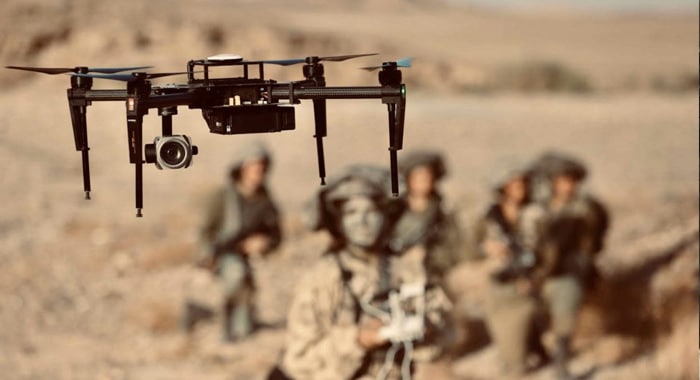Khushal Khan
In recent months, Pakistan’s tribal districts particularly Khyber, Bajaur, Waziristan, and the Tirah Valley have witnessed a troubling surge in acts of terrorism. At the heart of this renewed wave of violence is the outlawed Khawarij group, which has begun employing advanced technology, most notably weaponised quadcopters, to carry out attacks and spread propaganda. These unmanned aerial vehicles, once used for recreational purposes, are now being converted into tools of terror against both civilians and security personnel.
What makes this development particularly dangerous is the accessibility and affordability of quadcopters. Available freely in local markets and online platforms, these devices can be procured without any licensing or government oversight. Extremist elements have taken advantage of this legal vacuum, modifying commercial drones to drop explosives on specific targets. More alarmingly, after each attack, a concerted effort is made to blame Pakistan’s security forces an attempt to sow discord among the public and malign the institutions tasked with protecting the nation.
The lack of a regulatory framework for drone ownership in Pakistan is a glaring vulnerability. Without proper registration, licensing, and monitoring mechanisms, any individual or group can misuse these aerial devices for malicious purposes. This gap in governance has been ruthlessly exploited by the Khawarij, who are now using these drones with impunity in Pakistan’s most sensitive and conflict-prone regions.
Recent attacks provide chilling evidence of this trend. On May 19, a quadcopter strike in Mir Ali tragically targeted innocent children. Almost immediately, blame was shifted toward the Pakistan Army, giving anti-state actors such as the so-called Pashtun Tahafuz Movement (PTM) a new narrative to push in their campaigns of misinformation. Similarly, on October 28, 2024, another drone attack rocked the Peer Mela Bazaar in Tirah Valley, killing two children and injuring 13 civilians five of them from a single family. Despite the brutality of the attack, PTM and other vested interests remained conspicuously silent, choosing instead to continue their smear campaigns against the state.
Following these attacks, a coordinated disinformation drive is typically unleashed on social media. PTM and other anti-state platforms deliberately distort facts, accusing Pakistan’s security forces of orchestrating the violence—without investigation or evidence. Their motive is clear: to shield the Khawarij and provoke public hostility against the state. This pattern of exploiting tragedy to foster anarchy and weaken national institutions is not only unethical it is treacherous.
It is crucial here to distinguish between state-operated drones and commercially available quadcopters. Military drones operate within a structured, accountable framework with full documentation and control. In contrast, commercial quadcopters unmonitored and unregulated are being turned into flying weapons by terrorist outfits. The deliberate conflation of the two by certain groups is a calculated tactic meant to confuse the public and undermine the legitimacy of the state.
The Khawarij, meanwhile, have openly admitted to receiving financial and technical support from hostile nations, including India and Afghanistan. India, still reeling from its military humiliation in Operation Swift Retort, is now allegedly seeking to destabilize Pakistan through proxy actors and hybrid warfare. The use of drones by the Khawarij is merely the latest chapter in this ongoing campaign of subversion.
Given the evolving nature of this threat, the government must act decisively. Immediate legislation is needed to regulate the purchase, registration, and usage of quadcopters. A robust system should be introduced to ensure that every such device in Pakistan is traceable, licensed, and monitored. Without such measures, the country risks becoming increasingly vulnerable to drone-enabled terrorism.
The public, too, must shoulder its responsibility. Citizens particularly in regions like Tirah, Waziristan, Khyber, and Bajaur have always stood as patriots, resisting foreign-sponsored militancy. Now is the time for them to once again unite against the Khawarij and their enablers. They must reject the false narratives of PTM and other anti-state actors who aim to divide the people and protect those who target innocents.
The Khawarij are enemies not only of Pakistan and Islam but of all humanity. Their use of technology for mass violence is a dark reminder of how far this fitna (rebellion) has evolved. But it is also a moment of awakening. The people of Pakistan must rise in solidarity with their armed forces to ensure that these enemies of peace are given a fate that serves as a warning for generations to come.
This is the time to stand with truth, to defend the nation, and to expose those who, under the guise of activism or ethnic representation, are aligned with forces seeking to weaken the state. United, informed, and resilient, Pakistan can and will overcome this modern-day threat posed by the Khawarij and their foreign sponsors.





